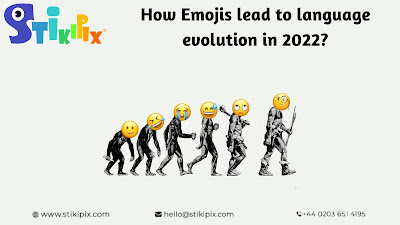How Emojis lead to language evolution in 2022?
Emojis have become widely used by people from a wide range of human cultures and languages because they enable all forms of digital communication, regardless of the language we use to communicate.
Because they are ideographic, or independent of a particular human language, emojis express ideas or concepts. These seek to convey ideas that are language-neutral and can be understood by anybody, much like traffic signs or caution notices at swimming pools or tourist attractions.Emojis and other iconographic symbols stand in for ideas rather than particular words. Although linguists disagree on the existence of an ideographic writing system, human language has always had a substantial ideographic component.
Although modern Chinese is built on ideographic principles, we have mostly moved past utilising strictly ideographic written language.
Language's ideographic origins
Early Chinese writing employed pictograms, like wheat plants, to portray the world with a little written 'vocabulary.' Later, it appears that this written character came to symbolise the sound of the term used to describe wheat.
Both the Chinese and Japanese writing systems are logographic in their contemporary versions. Modern languages, on the other hand, tend to be phonographic. This implies that while their individual written elements are meaningless by themselves, they may be joined to form meaningful words.
They may be composed of syllables or letters from the alphabet. Examples of phonographic writing systems that share the same alphabet are English, Spanish, and Malay.
Cherokee is one of several phonetic languages that employ a syllabary rather than an alphabet. Some languages are better suited to complicated syllable structures in alphabets than in syllabaries.
Emojis may be emotive, but they aren't necessarily as accurate as other forms of writing. But they do have the benefit of being applicable everywhere. Best Telegram EMO Packs, in contrast to 'actual' languages, can theoretically be used and understood by people who understand any human language.
Emojis aren't very cross-cultural.
Even with these tiny emblems, there is a ton of possibility for cultural interpretation. Western cultures prefer emojis that show emotions via the lips, but Japanese users prefer ones that do so with the eyes. Therefore, there is potential for cultural variations even if the language-neutral emoji may appear to be a worldwide code.
No matter our native tongue or cultural heritage, communication between humans was never intended to take place through a technological medium. Face-to-face communication is far more natural to us since we can express ourselves more fully through body language, tone, and other gestures.
These visual signals are shared by all members of our species, however, some may have cultural subtleties. Emojis have integrated so well into our informal communications practices probably because of this. They allow us to communicate our desired tone and give colour to our conversations.
Conclusion:
Even though no one is advocating for emojis to replace written language, the best telegram EMo services to buy online has been an incredibly effective addition to our vocabulary.
Visual signals have been used by humans to improve communication for a very long time. It appears that the emoji is merely the most recent tool we have discovered to improve our ability to communicate with one another.




Comments
Post a Comment